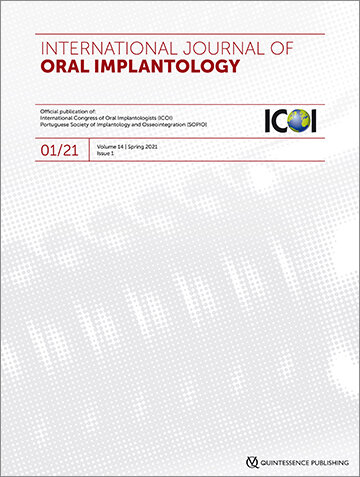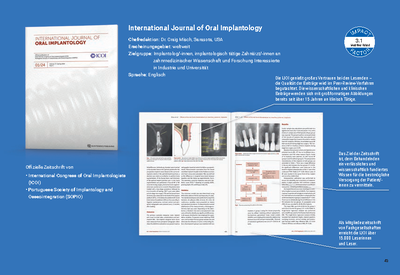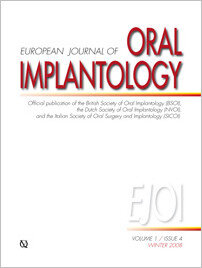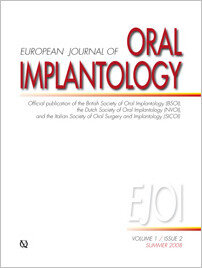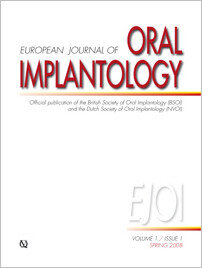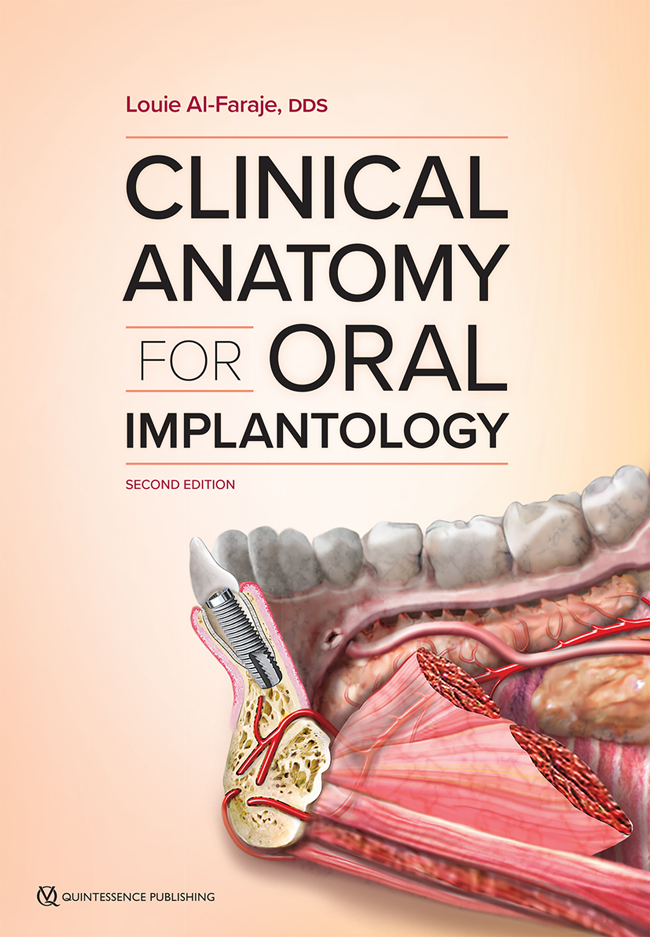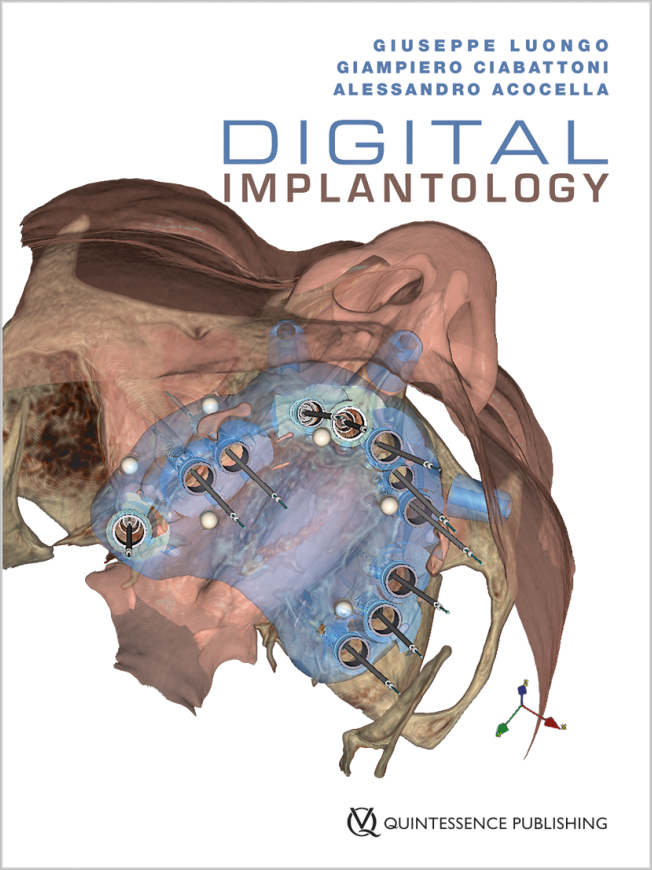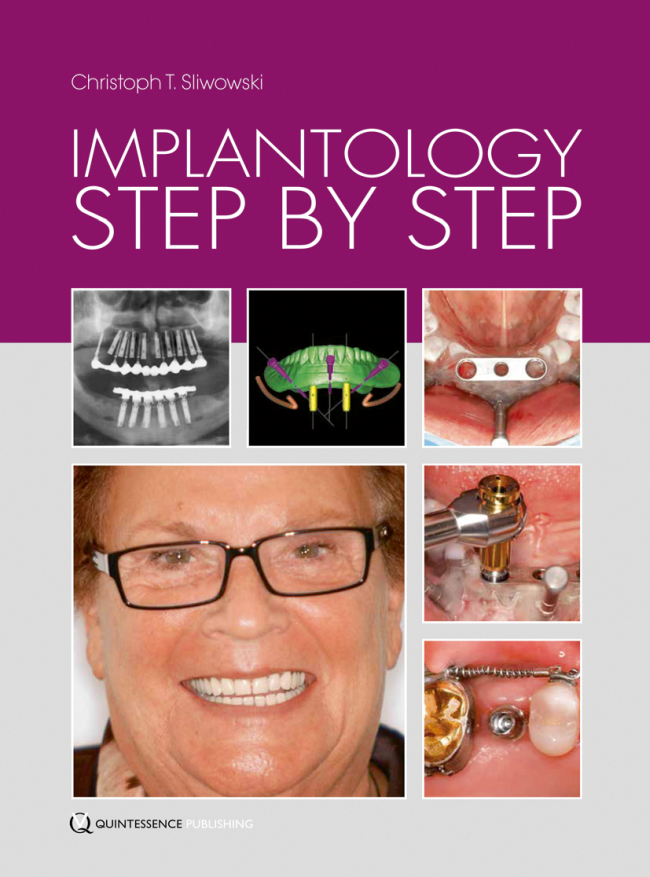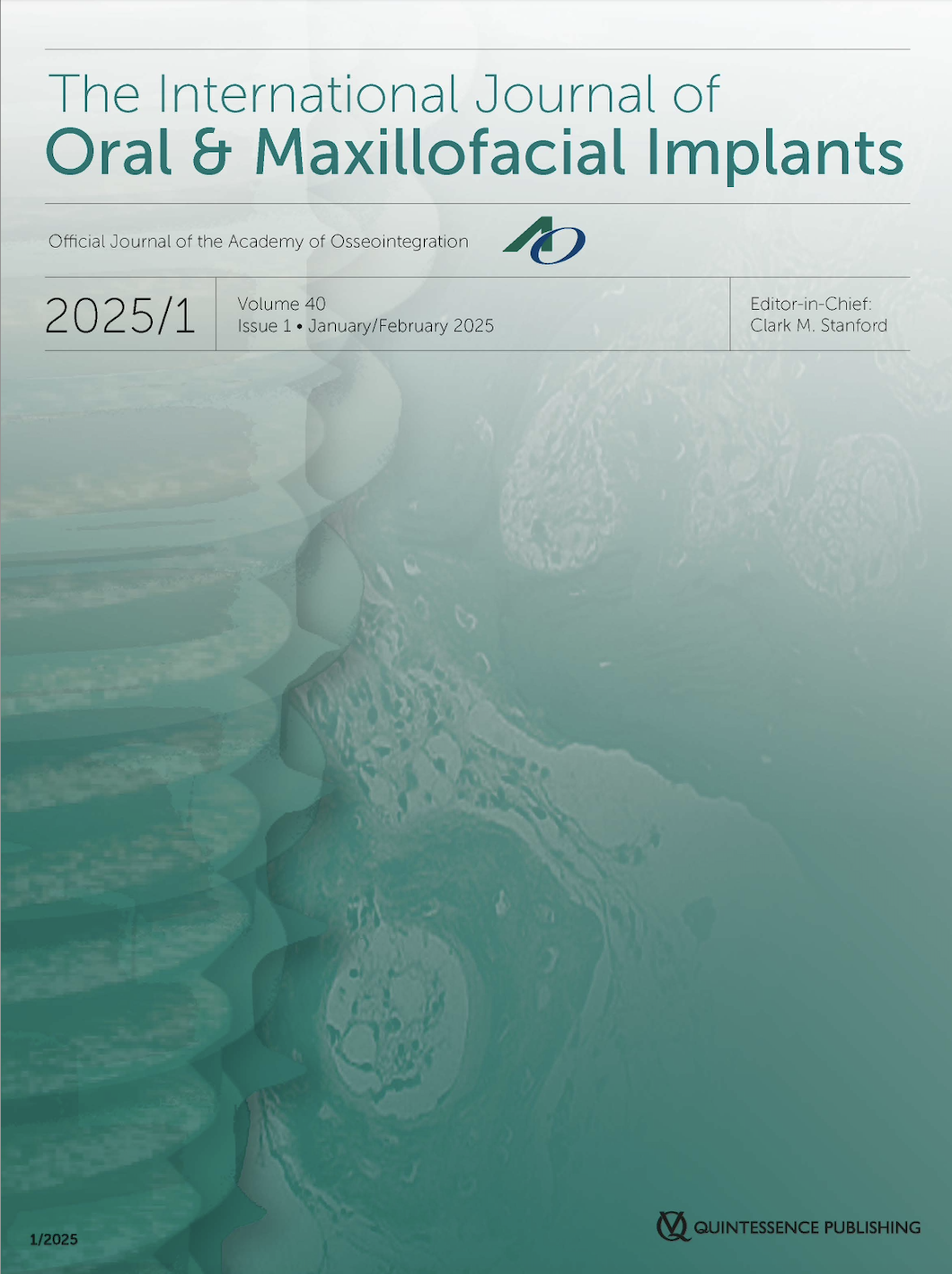ID de PubMed (PMID): 20467634Páginas 259-276, Idioma: InglésEsposito, Marco / Grusovin, Maria Gabriella / Coulthard, Paul / Worthington, Helen V.Objectives: To evaluate the efficacy of 1) immediate (within 1 week), early (between 1 week to 2 months), and conventional (after 2 months) loading of osseointegrated implants, and of 2) immediate occlusal versus non-occlusal loading during the bone healing phase.
Data sources: The Cochrane Oral Health Group's Trials Register, CENTRAL, MEDLINE and EMBASE were searched and several journals were handsearched with no language restriction up to June 2008.
Review methods: All randomised controlled trials (RCTs) of osseointegrated dental implants, having a follow up of 4 months to 1 year, comparing the same implant type immediately, early and conventionally loaded or occlusally and non-occlusally loaded were eligible. Screening of studies, quality assessment and data extraction were conducted in duplicate. Outcome measures were: prosthesis and implant failures and radiographic marginal bone level changes.
Results: Thirty RCTs were identified and 22 trials including 976 patients in total were included. Twelve trials compared immediate versus conventional loading, three early versus conventional loading, six immediate versus early loading, and one occlusally versus non-occlusally loaded implants. On a patient, rather than per implant basis, there were no statistically significant differences for any of the meta-analyses.
Conclusions: It is possible to successfully load dental implants immediately or early after their placement in selected patients, though not all clinicians may achieve optimal results. It is unclear whether it is beneficial to avoid occlusal contacts during the osseointegration phase. Trends suggest that immediately loaded implants fail more often than those conventionally loaded, but less commonly than those early loaded. If a clinician wishes to load early the implants, it might be wiser to load them immediately (within one week) than waiting for 1 to 2 months. A high degree of primary implant stability (high value of insertion torque) seems to be one of the prerequisites for a successful immediate/early loading procedure.
Palabras clave: dental implants, early loading, immediate loading, randomised controlled clinical trial, systematic review
ID de PubMed (PMID): 20467635Páginas 277-292, Idioma: InglésCannizzaro, Gioacchino / Leone, Michele / Torchio, Cinzia / Viola, Paolo / Esposito, MarcoPurpose: To evaluate the efficacy of 7-mm-long flapless placed single implants immediately or early loaded at 6 weeks.
Materials and methods: Thirty patients received two single Nanotite External Hex Biomet 3i implants that were then randomised for immediate or early loading. All implants had to be inserted with a minimum torque >40Ncm. Provisional crowns were put in slight occlusal contact and replaced by definitive crowns 3 months after loading. Outcome measures were implant failures, biological and biomechanical complications, peri-implant marginal bone level changes and patient preference.
Results: Twenty-nine implants were immediately loaded and 31 early loaded. Thirteen flaps had to be elevated in 12 patients. Eleven implants in ten patients did not reach the planned insertion torque. Eight implants in seven patients were immediately replaced by implants with a larger diameter, two were loaded anyway, and one implant that was randomised to immediate loading was early loaded instead. Nine months after loading, no drop-out occurred. One implant failed in each group. There were no statistically significant differences between groups for implant losses, complications, mean marginal bone level changes, and patient preferences.
Conclusions: Flapless placed 7-mm-long single implants can be successfully loaded the day of insertion. Longer follow-ups are needed to monitor the long-term prognosis of short implants.
Palabras clave: dental implants, early loading, flapless, immediate loading, short implants
ID de PubMed (PMID): 20467636Páginas 293-304, Idioma: InglésMaló, Paulo / Nobre, Miguel de AraújoPurpose: The aim of this study was to report on the rehabilitation of partial edentulism with immediate function implants placed in predominantly soft bone with flap and flapless surgical techniques.
Materials and methods: The prospective clinical study comprises 72 implants (50 in the maxilla and 22 in the mandible) placed in 41 consecutively included patients rehabilitated from partial edentulism, followed for 1 year. An implant specially designed for immediate function was used. The evaluation included clinical examinations and radiographic assessment of the marginal bone level at 6 months and 1 year. The outcome measure was the implant success, evaluated using the following implant success criteria: clinical stability (fixed dental prostheses removed and implants individually checked); fulfilled purported function without any discomfort to the patient; no suppuration or infection present; no radiolucent areas around the implants at time of evaluation; and no aesthetic complaints from the patient.
Results: No dropouts were registered during the follow-up of the study. The overall cumulative survival rate at 1 year was 98.6% (1 implant lost), with 100% for the implants placed with the flap surgical technique, and 96.9% for the implants placed with the flapless surgical technique. The overall average marginal bone resorption was 1.6mm (SD=1.1mm) at 1-year follow-up, with 1.4mm (SD=0.8mm) and 2.0mm (SD =1.4mm) for the flap and flapless surgical technique study groups, respectively. The complications registered were: peri-implant pathology (3 implants in 3 patients); fracture of the provisional crown/prosthesis (2 patients); crown loosening (1 patient) and prosthetic screw loosening (1 patient).
Conclusions: The placement of the specially designed implant for immediate function in predominantly soft bone is viable, as given by the overall 98.6% cumulative survival rate, and the rehabilitation using flapless surgery is safe and predictable. However, the flapless technique revealed more marginal bone resorption compared with the flap technique. Extra care should be taken in the flapless approach with respect to the inclusion criteria and difficulty of the surgery.
Palabras clave: flapless, immediate function, immediate loading, immediate placement, NobelSpeedy implant, surgical technique
ID de PubMed (PMID): 20467637Páginas 305-315, Idioma: InglésMangano, Carlo / Mangano, Francesco / Piattelli, Adriano / Lezzi, Giovanna / Mangano, Alberto / La Colla, Luca / Mangano, AlessandroPurpose: This prospective clinical study evaluated the survival rate and the implant-crown success of 314 Morse taper connection implants, used for single-tooth replacement, after 1 year of functional loading.
Materials and methods: Over a 4-year period (January 2003 to January 2007), 314 implants (168 maxilla, 146 mandible) were inserted in 302 patients (128 males, 174 females, aged between 23 to 79 years) in six different clinical centres. The sites included anterior (n = 118) and posterior (n = 196) teeth. To evaluate implant-crown success, the following clinical, prosthetic and radiographic parameters were assessed: modified plaque index (mPI), modified sulcus bleeding index (mBI), probing depth (PD), distance from the implant crown margin to the coronal border of the peri-implant mucosa (DIM), width of keratinised mucosa (KM), prosthesis function, and the distance between the implant shoulder and first crestal bone-implant contact (DIB). Success criteria included: absence of suppuration and mobility, PD5.0mm, absence of prosthetic complications, absence of continuous peri-implant radiolucency, and DIB1.5mm after 1-year of functional loading. Prosthetic restorations were all-ceramic (n = 116) and metal-ceramic (n = 198) crowns.
Results: The implant survival rate was 98.4% (5 implant losses, 1 drop-out). A few prosthetic complications (0.6% implant-abutment loosening) were reported. The mean DIB was 0.887±0.308mm. Among the survived implants (308), four did not fulfil the success criteria, giving an implant-crown success of 98.7%.
Conclusion: The use of Morse taper connection implants represents a successful procedure for singletooth replacement, in the anterior and posterior areas of both arches. The high mechanical stability may reduce prosthetic complications.
Palabras clave: implant-abutment connection, Morse taper connection implants, prosthetic complications, single-tooth restorations
ID de PubMed (PMID): 20467638Páginas 317-321, Idioma: InglésGlenny, Anne-Marie / Nieri, Michele / Worthington, Helen / Esposito, MarcoThis section presents concise educational articles for practising dentists. The series aims to educate practitioners regarding statistics and methods of conducting and interpreting research.
Palabras clave: case-control, case report, cohort, cross-sectional survey, education, evidence-based practice, randomised controlled clinical trial, study design





